How do you make candles for beginners?
CANDLE MAKING
I have a small amount of beeswax that I have melted up from cappings, and as shipping costs are so high I would like to try making candles of some of this wax. My wife has been to a class in candle making and will attend at least one more class. They are not using beeswax, and I remember the gfand array of candles I saw when I visited your plant. It seems to me beeswax is the best candle wax one could use. My wife thinks there should be some process of bleaching the wax to make it white. Is this advisable? Do you have any literature that gives directions or instructions for homemade candles? Or any other Home Arts for using beeswax?We don’t know of any good way of bleaching a small amount of wax for home usage. That is, unless you are willing to be patient and let the sun actually do the bleaching for you. Something that you can do would be to heat the wax gently over water, therefore allowing the wax to completely melt. If you can at all avoid it, the water shouldn’t boil. If the water and wax boil too much together, you’ll get a spongy type of wax out of it that requires some additional melting to correct the situation. By getting the wax completely melted over the water and stirring the water and wax together gently, the honey that may be adhering, as well as other incorporated particles tend to drop out leaving the wax clean and much more suitable for burning. Simply remove the wax water mixture from the heat, and let it cool down slowly. The wax will solidify on top of the water, and can be picked off quite easily. If there is any debris on the wax water interface, it can be easily scraped from the wax cake.
The chemical bleaching procedures that we use for whitening the wax are quite involved, and involve some rather caustic chemigals. They would not be suitable for home use. One thing that you could do would be shred wax into small particles, or ribbons, and expose it to the sun’s rays. This is the method that was used to bleach beeswax years ago, and although it doesn’t produce a white wax, it is a nice cream color if you have enough sun and are patient enough.
Now that the more serious work of harvesting the honey crop is over, it is time to start thinking of a few of those lighter, more fun-type projects. One of these projects would have to include making your own beeswax candles. Such an undertaking may seem a bit difficult, but this need not be the case.
It’s really not much different from making other kinds of candles at home; a do-it-yourself project that is becoming increasingly popular. A look at the Christmas catalogs from the major mail order houses will give an indication of the scope of the general interest in home candle making. But, no synthetic- wax candle can come close to capturing the magic of one of pure beeswax. The soft rich beeswax color, combined with the beeswax aroma and burning qualities, puts beeswax candles in a class all to themselves.
The first step in any such project is that of securing the proper materials and utensils. Finding the basic raw material, the wax, is no problem. Simply choose a cake of wax that is colored to please you. Securing the proper wick- ing can be a bit more troublesome. Common kitchen string or cord should not be used you will need to go to a hobby shop or other supplier who handles candles supplies for genuine wicking. They can help you select the size wick needed, depending on the size of candle you intend to make. The rest of the equipment needed can be found in any kitchen, providing permission to use those facilities is forthcoming. Regardless of the type of candle to be made, you will need a double boiler for heating and cleaning the wax, a kitchen thermometer for obtaining proper wax temperatures and a suitable cup for pouring wax. For hand-dipped tapers, a tall narrow container such as a juice can will be needed, as well as a larger container with heated water to help maintain the proper wax temperature. For molded candles, the proper molds need to be secured.
First, prepare the wax. Select a cake of clean wax of the color desired. If a cleaning step is required, gently melt the wax, with water added, over the double boiler. Be careful not to allow the water to boil, as a water-wax emulsion can result. Rather, melt the wax over the water, then stir the mixture, after which it should be allowed to settle. Normally, the water will settle out to the bottom carrying with it dirt and debris. The cleaned wax can be dipped off the top.
In dipping tapers, cut off a length of wicking longer than the candle desired. Fasten a weight to one end of the wick. This will allow you to get the wick to the bottom of the wax-filled container rapidly, and will also aid in keeping the candle straight. Fill the dipping container with wax, and maintain the wax at a temperature of about 170°F. Then, do repeated dippings until the proper diameter of the candle has been obtained.
How to Make Beeswax Candles
For pouring molded or cast candles, the secret again is in the temperature of the wax as it is poured. Pouring too hot and cooling too fast can cause the cake to stick to the mold and open up cracks in the middle, while pouring too cool will result in air bubbles becoming incorporated. Again, the 170° temperature will not be too far from ideal. Once poured, cover the mold and allow to cool very slowly.
Colors can easily be added for either type of candle. However, be sure to use oil-soluble dyes. Coloring pigments tend to clog wicks and water-soluble colors just will not mix with the wax. For a start, melted color crayons can be used. In either type of candle, the dye can be mixed with the wax first to produce a candle of solid color or it can be used only as an outer dip coat.
Now, you’re all set for not only home decorations, but also have an ideal gift for friends during the holiday season. What more appropriate personalized gift than a pair of beeswax candles and a jar of honey!

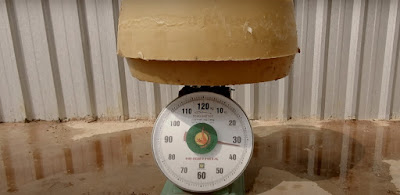
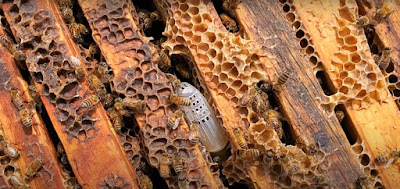
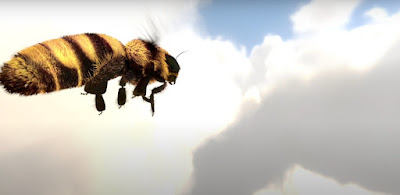


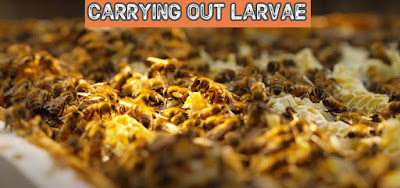
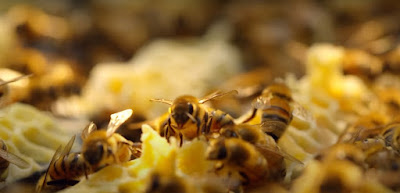

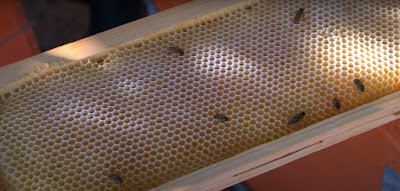


Comments
Post a Comment